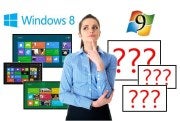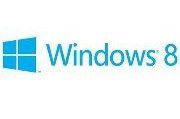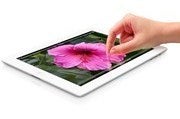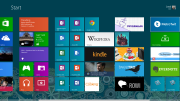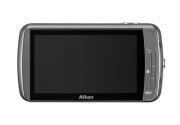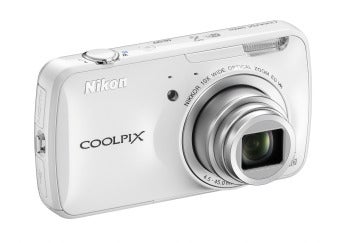Most of the questions were from TCS old papers.Only the data get change.
1. In a two-dimensional array, X (9, 7), with each element occupying 4 bytes of memory, with the address of the first element X (1, 1) is 3000, find the address of X (8, 5).
ANS: 3212
2. In the word ORGANISATIONAL, if the first and second, third and forth, forth and fifth, fifth and sixth words are interchanged up to the last letter, what would be the tenth letter from right?
ANS: I(ROANISATIONALG)
3. What is the largest prime number that can be stored in an 8-bit memory? ANS:127
4. Select the odd one out. a. Java b. Lisp c. Smalltalk d.Eiffel. ANS: LISP
5. Select the odd one out a. SMTP b. WAP c. SAP d. ARP ANS: SAP
6. Select the odd one out a. Oracle b. Linux c. Ingress d. DB2 ANS:LINUX
7. Select the odd one out a. WAP b. HTTP c. BAAN d. ARP ANS:BAAN
8. Select the odd one out a. LINUX b. UNIX c. SOLARIS d. SQL SERVER ANS:SQL SERVER
9. Select the odd one out a. SQL b. DB2 c. SYBASE d. HTTP ANS:HTTP
10. The size of a program is N. And the memory occupied by the program is given by M = square root of 100N. If the size of the program is increased by 1% then how much memory now occupied?
11. A man, a woman, and a child can do a piece of work in 6 days. Man only can do it in 24 days. Woman can do it in 16 days and in how many days child can do the same work? ANS:16
12. In which of the system, decimal number 194 is equal to 1234? ANS:5
13. Find the value of the 678 to the base 7. ANS:1656
14. Number of faces, vertices and edges of a cube ANS:6,8,12
15. Find the value of @@+25-++@16, where @ denotes "square" and + denotes "square root". ANS:121
16. Find the result of the following _expression if, M denotes modulus operation, R denotes round-off, T denotes truncation:
M(373,5)+R(3.4)+T(7.7)+R(5.8) ANS:19
17. If TAFJHH is coded as RBEKGI then RBDJK can be coded as --------- ANS:PCCKJ
18. G(0)=-1, G(1)=1, G(N)=G(N-1) - G(N-2), G(5)= ? ANS:-2
19. What is the max possible 3 digit prime number?
20. A power unit is there by the bank of the river of 750 meters width. A cable is made from power unit to power a plant opposite to that of the river and 1500mts away from the power unit. The cost of the cable below water is Rs. 15/- per meter and cost of cable on the bank is Rs.12/- per meter. Find the total of laying the cable.
ANS:20250
21. The size of a program is N. And the memory occupied by the program is given by M = square root of 100N. If the size of the program is increased by 1% then how much memory now occupied?
22. In Madras, temperature at noon varies according to -t^2/2 + 8t + 3, where t is elapsed time. Find how much temperature more or less in 4pm to 9pm. ANS: 385.8(DB)
23. The size of the bucket is N kb. The bucket fills at the rate of 0.1 kb per millisecond. A programmer sends a program to receiver. There it waits for 10 milliseconds. And response will be back to programmer in 20 milliseconds. How much time the program takes to get a response back to the programmer, after it is sent? ANS: 30MILISECOND
24. A man, a woman, and a child can do a piece of work in 6 days. Man only can do it in 24 days. Woman can do it in 16 days and in how many days child can do the same work?
25. If the vertex (5,7) is placed in the memory. First vertex (1,1) ?s address is 1245 and then address of (5,7) is --------
26. Which of the following are orthogonal pairs? a. 3i+2j b. i+j c. 2i-3j d. -7i+j ANS: (A)& (C).
27. If VXUPLVH is written as SURMISE, what is SHDVD? ANS: PEASA
28. If A, B and C are the mechanisms used separately to reduce the wastage of fuel by 30%, 20% and 10%. What will be the fuel economy if they were used combined. ANS: 20%
29. What is the power of 2? a. 2068 b.2048 c.2668 ANS: (B). 2048
30. Complete the series. 3, 8, --, 24, --, 48, 63 ANS: 15,35
31. Complete the series. 3, 8, --, 24, --, 48, 63 ANS: 15,35
32. Complete the series. 4, -5, 11, -14, 22, --- ANS: -27
33. A, B and C are 8 bit no?s. They are as follows:
A 1 1 0 1 1 0 1 1
B 0 1 1 1 1 0 1 0
C 0 1 1 0 1 1 0 1
Find ( (A-B) u C )=?
Hint : A-B is {A} - {A n B} ANS: 0 1 1 1 1 1 1 1 (DB)
34. A Flight takes off at 2 A.M from northeast direction and travels for 11 hours to reach the destination which is in north west direction.Given the latitude and longitude of source and destination. Find the local time of destination when the
flight reaches there? ANS: 1:00 P.M
35. A can copy 50 papers in 10 hours while both A & B can copy 70 papers in 10 hours. Then for how many hours required for B to copy 26 papers? ANS: 13
36. A is twice efficient than B. A and B can both work together to complete a work in 7 days. Then find in how many days A alone can complete the work? ANS: 10.5 DAYS(11)
37. A finish the work in 10 days. B is 60% efficient than A. So hoW days does B take to finish the work?ANS : 4DAYS.
38. A finishes the work in 10 days & B in 8 days individually. If A works for only 6 days then how many days should B work to complete A?s work? ANS : 3.2 DAYS(4)
39. Given the length of the 3 sides of a triangle. Find the one that is impossible? (HINT : sum of smaller 2 sides is greater than the other one which is larger)
40. Find the singularity matrix from a given set of matrices?(Hint det(A)=0)
41. A 2D array is declared as A[9,7] and each element requires 2 byte.If A[ 1,1 ] is stored in 3000. Find the memory of A[8,5] ?ANS: 3106.
42. Sum of slopes of 2 perpendicular st. lines is given. Find the pair of lines from the given set of options which satisfy the above condition?
43. (a) 2+3i (b)1+i (c) 3-2i (d) 1-7i .Find which of the above is orthogonal. ANS : (A) & (C).
44. The number 362 in decimal system is given by (1362)x in the X system of numbers find the value of X a}5 b) 6 c) 7 d) 8 e) 9
45. Given $ means Tripling and % means change of sign then find the value of $%$6-%$%6 ANS : -72
46. My flight takes of at 2am from a place at 18N 10E and landed 10 Hrs later at a place with coordinates 36N70W. What is the local time when my plane landed.
a) 6:00 am b) 6:40am c)7:40 d)7:00 e)8:00 (Hint : Every 1 deg longitude is equal to 4 minutes . If west to east add time else subtract time) ANS: (E) 8:00
47. Find the highest prime number that can be stored in an 8bit computer.
Section 3.Critical Reasoning.
1. The players G,H,J,K,L,M,N,O are to be felicitated of representing the county team in Baseball Out of these H,M,O also are in the Football team and K,N are there in the Basket ball team . These players are to be seated on a table and no
two players who has represented the county in more than one game are to sit together.
1.Which one of the orders can they be seated in
2. Which of the orders is not possible
3. If N is seated in the middle then which of the following pairs cannot be seated near him .
4. If M is seated then which of the following pairs can be seated next to him.
Choices are given for all the questions
2. There are 2 groups named Brown and red. They can?t marry in the same group. If the husband or wife dies then the person will convert to their own group. If a person is married then the husband will have to change his group to his wife?s
group. The child will own the mothers group. From these a set of 4 questions were given .Solve them
Eg;
1.Brown?s daughter is red (False)
2. If a person is red. Then his/her mother?s brother belong to which group if he is married (Brown)
3. 7 people - a,b,c,d,e,f,g Need to make a seating arrangement for them.
Conditions:
1)A should be at the center
2) B,F should be at the right extreme
3)C,E always in pair
4)D,G as far as possible
Questions from the above were asked?
Eg:
Which of the following pairs were not possible?
Others questions were similar to the above. More questions were from Barrons.
HR Questions
1. Market urself
2. Why TCS ?
3. Will u switch over to any other company after joining TCS? If NO then why?
4. R u mobile? ( R u ready to go anywhere ?)
5. R u ready to go to places of extreme temperature. If yes what do u think of ur safety?
6. Rate ur good qualities?
7. What is the difference between hard and smart work?
8. Do u have a plan of doing higher studies ?
Technical Questions :
The questions were different for different persons and depends on the field of interest that u say.
Communication
1. OSI Layers in n/w with the functionalities
2. TCP/IP protocol
3. Bridges, Routers, LAN, WAN, MAN
4. Token bus, FDDI, Ethernet
C Language
1. Datastructures esp :Linked list and trees
2. Structures , unions, Kind of variables ( local ,Global)
3. Strrev( ) program
4. Case structure (it is not the usual switch case stat)
5. Calloc,malloc
6. Divide 2 number and print the o/p ( NOTE: Check for divide by zero error)
Enter Your Comments
Model test 1: Section5 - qns 1-4 (motorist), qns 13-16 (red and brown)
Section6 - qns 1-4 (conservative,democratic), qns 8-11 (latin, sanskrit), qns 12-18 (joe,larry,ned), qns 19-22 (a causes b)
Model test 2: Section1 - qns 19-22 (wallachia and rumelia) ---i got this qn, but the names were changed as london and paris, and a,b,c etc were changed as french, italian etc.
Section6 - qns 8-12 (ashland, liverpool), qns 13-16 (spelunker) ---i got this qn, qns 17-22 (pesth) ---i got this one too
Model test 3: Section6 - qns 1-4 (all Gs are Hs)
Model test 4: Section5 - qns 8-11 (horizontal row), qns 19-22 (a,b,c cause d)
Section6 - qns 8-12 (spanish, italian), qns 13-16 (all As, Bs), qns 17-22 (progressive federal party)
Model test 5: Section3 - qns8-11 (museum), qns 19-22 (A is the father)
Section7- qns 1-5 (prahtu, brahtu), qns 21-25 (scurvy)
Ananytical section consists of 12 qns to be answered in 30 mins. Take care of this section because the qns have more weightage here. Even if u answer aptitude and verbal well, u can lose the test if u flunk this section.
which i remember are :
1. whats the largest prime no. that can b stored in an 8-bit memory?
2. In the word SENSATIONAL 1st letter is interchanged with 2nd, 3rd with 4th, 5th with 6th and so on. what is the 10th letter ?
3. In a 2D array, X(9,7) with each element occupying 2 bytes of memory, find the address of X(8,5). Given address of X(1,1) is 3000.
4.Select odd one out : Windows NT, Linux, C++, (some other operating system.. cant recall its name)
5. Select odd one : Oracle, Linux, Ingress, DB2
6.A man n child can do a work in 6 days. Man can alone do it in 24 days. How long will the child take?
7.Convert 342 (in decimals) to base 5.
8. No. of faces, vertices n edges of a cuboid is : ?
9. If M denotes modulus, R denote round off, T denote truncation, the find the value of :
M(373,5) + R(3.4) + T(7.7) + R(5.8)
10. G(0) = -1, G(1) = 1, G(n) = G(n-1) + G(n-2). then G(5) = ?
11.at a particular place the temperature varies as t^2/2 + 8t + 3. where t is elapsed time. find the temp differnce between 6 pm and 9 pm.
12. which of these set of angles doesnt represent a triangle : a) 90,60,30 b) 50,100,30 c) 67,22, 90
13. Complete the series : (sorry friends, i forgot the series)
14. which is a power of 2 among the following : a)2068 b) 2048 c)2668
15. A, B and C are given as :
A = 11011011
B = 01111010
C = 01101101
Find the decimal equivalent value of (AUB)^C where ^ denotes Intersection
16.A, B,C are mechanisms used separately to reduce fuel wastage by 30%, 20 % and 105. what'll b the fuel economy if they were used combined?
17. Find the singularity matrix out of the follwing : (sorry, dont remember the options)
18. If $ means tripling and % means change of sign, then find the value of :
%$%9 - $%$9
19. some questions with venn diagram where people speaking hindi, english & bengali were given. 3 questions were asked like how many speak hindi and not english, how many total people were there etc...
20. 3 questions were given on data interpretation using a bar chart nad a pie chart.
Critical reasoning : 3 passages, 12 questions, 30 minutes
Suggestion: Do all the 250 critical reasoning passages from barrons 12th or 13th edition model test papers 1 to 5. u'll get 100% common questions. names may be changed...
my passages were:
1. armenian, latin, celtic language courses......
2. Big university, small college 3 member team. 2 representatives of the big university.....
3. seating arrangement....
its observed, they always give 2 easier and one harder critical reasoning passage.
HEY GUYS, IF U HAVE AN ONLINE TEST, & IF AFTER THE EXAM YOUR PSYCHOMETRIC WINDOW OPENS UP ON THE SCREEN BE ALMOST SURE THAT U HAVE CLEARED THE APTITUDE TEST. otherwise also u can get selected depending on relative performance, but this is an almost instant indication...
Test Paper :71
Paper Type : Aptitude - English
Test Date : 1 April 2007
Test Location : KIIT University
Posted By : Nitiksh
TCS PAPER ON 1st APRIL
1. Furtive - stealthy (secret)
2. Pretentious - ostentatious (affected)
3. Incentive - provocation
4. Discretion - prudence
5. Meager - scanty
6. Cargo - freight (load)
7. Baffle - frustrate
8. Efface - obliterate (wipe out)
9. Lament - mourn
10. Compunction - remorse (regret)
11. Amiable - friendly
12. Cajole - coax, flatter
13. Embrace - hug (hold-cuddle)
14. Latent - potential
15. Confiscate - appropriate (to take charge)
16. Emancipate - liberate
17. Misery - distress
18. Annihilate - to destroy
20. Acumen - exactness
21. Metamorphosis - transform
22. Scrutiny - close examination
23. Obstinate - stubborn
24. Fuse - combine
25. Whet - sharpen
1. Momentary - transient
2. Latitude - scope
3. Heap - to pile (collect)
4. Adhesive - tenacious
5. Veer - diverge (turn)
6. Concur - agree (accept)
7. Subside - wane (drop)
8. Enounce - reject
9. Hover - linger (stay close)
10. Tranquil - serene (calm)
11. Admonish - usurp (reprove)
12. Alienate - estrange (isolate)
13. Instigate - dissipate (dismiss)
14. Belief - conviction
15. Covet - crave (desire)
16. Belated - too late
17. Solicit - beseech (seek)
18. Brim - border
19. Divulge - reveal
20. Tamper - obstruct
21. Caprice - whim (impulse)
22. To merit - to deserve
23. Stifle - suffocate (smother)
24. Lethargy - stupor (lazy)
admonish = usurp (reprove)
merry = gay
alienate = estrange (isolate)
instigate = incite
dispel = dissipate (dismiss)
belief = conviction
covet = crave (desire)
belated = too late
solicit = beseech (seek)
brim = border
subside = wane (drop)
renounce = reject
hover = linger (stay close)
divulge = reveal
heap = to pile (collect)
adhesive = tenacious
veer = diverge (turn)
hamper = obstruct
caprice = whim (impulse)
to merit = to deserve
stifle = suffocate (smother)
inert = passive
latitude = scope
momentary = transient
tranquil = serene (calm)
admonish = cautious
efface = obliterate(wipe out)
conciliation= make less angry or more friendly
intermittent = stopping and then starting
preponderant= superiority of power or quality
vacillate = undecided or dilemma
deprecate = feel and express disapproval
assess = determine the amount or value
litigation = engaging in a law suit
negotiate = discuss or bargain
expedient = fitting proper, desirable
conglomeration = group, collection
connotation = suggest or implied meaning of expression
discretion = prudence
compunction = remorse (regret)
amiable = friendly
cajole = coax (wheedle – sweet talk)
incentive = provocation
embrace = hug (hold-cuddle)
latent = potential
confiscate = appropriate (to take charge)
emancipate = liberate
lament = mourn
confiscate = appropriate
obstinate = stubborn
acumen = exactness
metamorphosis = transform
scrutiny = close examination
annihilate = to destroy
whet = sharpen
behest = request
adage = proverb
penitence = to repeat
lethargy = stupor (lazy)
volume = quantity
furtive = stealthy (secret)
meager = scanty
cargo = freight(load)
baffle = frustrate
pretentious = ostentatious(affected)
volatile = ever changing
expedite = hasten
surplus = excessive
affinity = strong liking
fluctuation = wavering
empirical = experimental
retrospective = review
fallible = liable to error
egregious = bad
truncate = shorten by cutting
decomposition = rotten
equivocate = lie, mislead
1] Depreciation = deflation, depression, devaluation
2] Deprecate = feel and express disapproval
3] Incentive = thing one encourages one to do
4] Echelon = level of authority or responsibility
5] Innovation = make changes or introduce new things
6] Intermittent = externally stopping and then starting
7] Detrimental = harmful
8] Conciliation = make less angry or more friendly
9] Orthodox = conventional or superstitious
10] Fallible = liable to errors
12] Volatile = ever changing
13] Manifestation = clear or obvious
14] Connotation = idea
15] Reciprocal = reverse, opposite
16] Agrarian = related to agriculture
17] Vacillate = undecided or dilemma
18] Simulate = produce artificially resembling
an existing one
20] Access = to approach
21] Compensation= salary
22] Truncate = shorten by cutting
23] Adherence = stick
24] Heterogeneous = non-similar things
25] Surplus = excessive
26] Assess = determine the amount or value
27] Cognizance = knowledge
28] Retrospective = review
29] Naive = innocent , rustic
30] Equivocate = tallying on both sides
31] Postulate = frame a theory
32] Latent = potential
33] Fluctuate = wavering
34] Eliminate = to reduce
35] Affinity = strong liking
36] Expedite = hasten
37] Console = to show sympathy
38] Adversary = opposition
39] Affable = lovable, approachable
40] Decomposable = rotten
41] Egregious = especially bad
42] Conglomeration = group
43] Aberration = deviation
44] Erudite = wise, profound
45] Augury = prediction
46] Credibility = ability to common belief, quality of being credible
1. Admonish= usurp
2. Alienate = estrange
3. Belief = conviction
4. Baffle = puzzle
5. Brim = edge
6. Covet = to desire
7. Caprice = whim
8. Concur = agree
9. Confiscate = appropriate
10. Cargo = load, luggage
11. Dispel = scatter
12. Divulge = reveal, make known, disclose
13. Discretion = prudence
14. Emancipate = liberate
15. Efface = obliterate
16. Embrace = hug, hold, cuddle
17. Furtive = stealthy
18. Hamper = obstruct
19. Heap = to pile
20. Hover = linger
21. Incentive = spur
22. Instigate = incite
23. Inert = passive
24. Latitude = freedom from narrow limitations
25. Lament = wail
26. Momentary = for small time
27. Merit = to deserve
28. Miserable = unhappy, sad
29. Obstinate = stubborn
30. Overt = obvious, clear, explicit, open
31. Pretentious = ostentatious
32. Potential = latent
33. Renounce= give up, reject
34. Solicit = Humble, urge
35. Subside = settle down, descend
36. Stifle = suppress, extinguish
37. Tranquil = calm, silent, serene
38. To merit = to deserve
39. Volume = quantity
40. Veer = change in direction
Choose the word or phrase that is most nearly similar in meaning to the word in capital letters.
11. RIFE
(1) direct (2) scant (3) peaceful (4) grim (5) mature
12. APOCALYPTIC
(1) insular (2) complaisant (3) crass (4) prophetic (5) false
13. CAVIL
(1) starry (2) criticize (3) cold (4) fundamental (5) porous
14. BLAND
(1) caustic (2) meager (3) soft (4) uncooked (5) helpless
15 CORROBORATE
(1) confirm (2) orate (3) disturb (4) apply (5) whisper
16. JAUNTY
(1) youthful (2) ruddy (3) strong (4) untravelled (5) sedate
17. BOISTEROUS
(1) successful (2) democratic (3) noisy (4) ambitious (5) lamentable
18.TENUOUS
(1) vital (2) thin (3) careful (4) dangerous (5) necessary
19. ALIMENTARY
(1) nourishing (2) prior (3) exterior (4) private (5) cautious
20.DELETERIOUS
(1) delaying (2) experimental (3) harmful (4) graduating (5) glorious
Answers
11.(2) 12.(4) 13.(2)
14.(4) 15.(1) 16.(5)
17.(3) 18.(2) 19.(1)
20.(3)
The exam had three sets-X,Y,Z i got Z which was the toughest
section A was english,
there was paragraph making which i cud not do it was very tough, so i guessed the answers and hoped atleast few hits the target the RC had a passage from pg 99 of barons,i had practiced all the barrons RC aand it helped .
i wud recommend the same for all as if u hv practiced the RC it saves a lot of time and TCS keeps repeating the RC from Barrons.Infact instead of remembering all th ewords from barrons its better to remember all the RCs as u will get 6 marks without wasting ne time whereas others may hv to waste 15-20 mins on RC
aptitute was easy,just do ne previous yr question,they repeat the same questions again and again,infact just remember all the answers as i had done,i helps..............
And yes there were few wrong questions and u need not waste time on them
Critical reasoning was from 12th edition Barrons model test papers.......
1>>toll brigde prob
2>>red and brown marriage
3>>>All A's is B's......
THE interview from a cool affair......
1>First was tell me something abt urself:
ans>blah blah
2> write the code for bubble sort
ans>wich i wrote
3>then he asked me wats function overloading,function overriding,function signature,virtual function....
4>difference b/w public,protected and private
5>diff b/w yagi-uda and normal anteena
6>B.W. range of FM
7>wat r cipher and encryption(my project was on nt security)
8>wats a IC
9>truth table of XOR gate and its apllication(ADDER ckt)
10>wats i/p bias current


